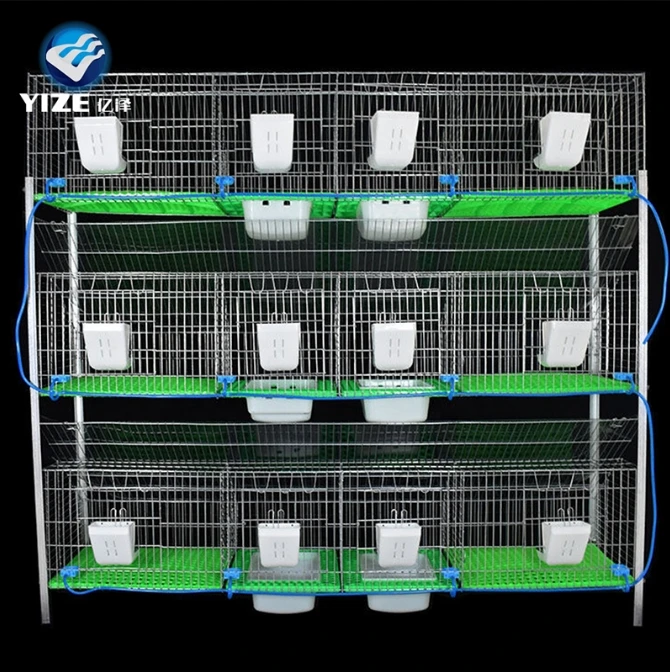wire chicken cage
Dec . 06, 2024 15:22 Back to list
wire chicken cage
The Evolution and Importance of Wire Chicken Cages
In the world of poultry farming, the welfare of chickens is paramount, not only for ethical reasons but also for improving the quality of eggs and meat production. Among the myriad of farming techniques and equipment available, wire chicken cages have emerged as a popular choice for both small-scale and industrial poultry operations. This article delves into the design, benefits, and considerations surrounding wire chicken cages, illustrating their vital role in modern aviculture.
Wire chicken cages are typically constructed using sturdy metal wires, creating a framework that allows for maximum ventilation while providing a secure environment for the birds. These cages can range in size from small, individual enclosures for backyard farmers to large, multi-tiered systems used in commercial operations. The design of wire cages has evolved significantly over the years, with innovations aimed at improving the overall health and comfort of the chickens.
One of the primary benefits of wire chicken cages is their ability to promote hygiene. Unlike traditional floor housing systems, wire cages allow droppings to fall through the wire mesh, preventing the accumulation of waste. This design helps reduce the risk of bacterial infections and other diseases, which can spread rapidly in more confined and unsanitary conditions. Regular cleaning is simplified by the structure of the cages, leading to a healthier environment conducive to increased production.
Moreover, wire chicken cages facilitate better management of the flock. Farmers can easily monitor the health and behavior of individual birds, which is crucial for promptly identifying any health issues. This level of oversight is challenging to achieve with free-range systems where hens roam freely. In wire cages, chickens are kept in a defined space, reducing the chances of injuries and combating issues of pecking and overcrowding.
wire chicken cage

Another significant advantage of wire chicken cages lies in their space efficiency. They can be stacked vertically, maximizing the use of limited floor space and allowing farmers to raise more birds without expanding their facilities. This efficient use of space is particularly beneficial for urban or suburban farmers who may have restrictions on land use.
However, it’s essential to address some common concerns regarding wire chicken cages, particularly with respect to animal welfare. Critics argue that confinement in wire cages may lead to stress and natural behaviors being inhibited, as chickens are inherently social creatures. To mitigate these concerns, many manufacturers have developed enriched cage designs that include perches, nesting boxes, and space for scratching and foraging. These enhancements aim to replicate a more natural environment, allowing chickens to express instinctual behaviors while still reaping the benefits of wire cages.
Furthermore, regulations regarding cage systems are evolving. With a growing emphasis on animal welfare, many regions are starting to enforce standards that require cages to provide more space and amenities for the birds. Farmers need to stay informed about these regulations, balancing modernization and compliance with the ethical treatment of their livestock.
In conclusion, wire chicken cages represent a significant advancement in poultry farming, offering numerous benefits in terms of hygiene, space efficiency, and flock management. They cater to the dual necessity of productivity and animal welfare. As the poultry industry continues to evolve, embracing innovations that prioritize the well-being of chickens alongside economic viability will be essential. The future of poultry farming will depend on finding solutions that meet these challenges, ensuring a sustainable and humane approach to raising chickens while satisfying the global demand for poultry products. Ultimately, the ongoing dialogue about the use and design of wire chicken cages will shape the next generation of poultry farming practices, promoting a balance between efficiency and animal welfare that benefits both the industry and the chickens it serves.
-
Hot Sale 24 & 18 Door Rabbit Cages - Premium Breeding Solutions
NewsJul.25,2025
-
Automatic Feeding Line System Pan Feeder Nipple Drinker - Anping County Yize Metal Products Co., Ltd.
NewsJul.21,2025
-
Automatic Feeding Line System Pan Feeder Nipple Drinker - Anping County Yize Metal Products Co., Ltd.
NewsJul.21,2025
-
Automatic Feeding Line System - Anping Yize | Precision & Nipple
NewsJul.21,2025
-
Automatic Feeding Line System - Anping Yize | Precision & Nipple
NewsJul.21,2025
-
Automatic Feeding Line System-Anping County Yize Metal Products Co., Ltd.|Efficient Feed Distribution&Customized Animal Farming Solutions
NewsJul.21,2025






